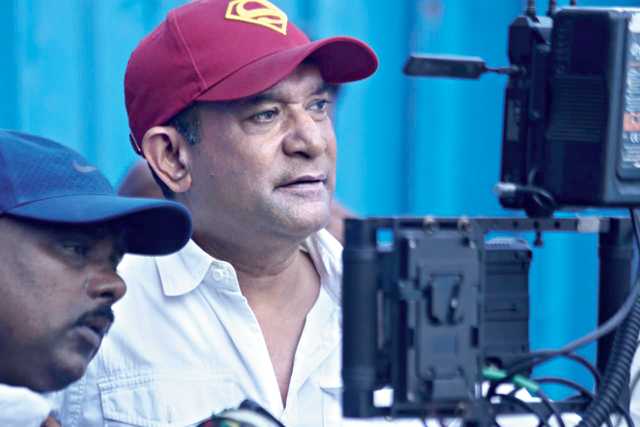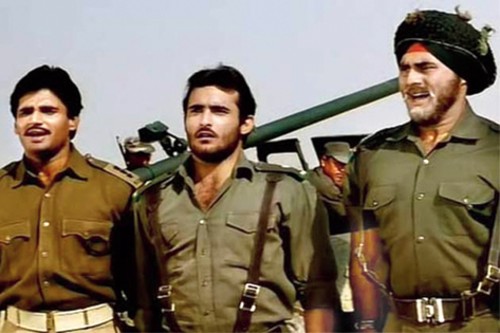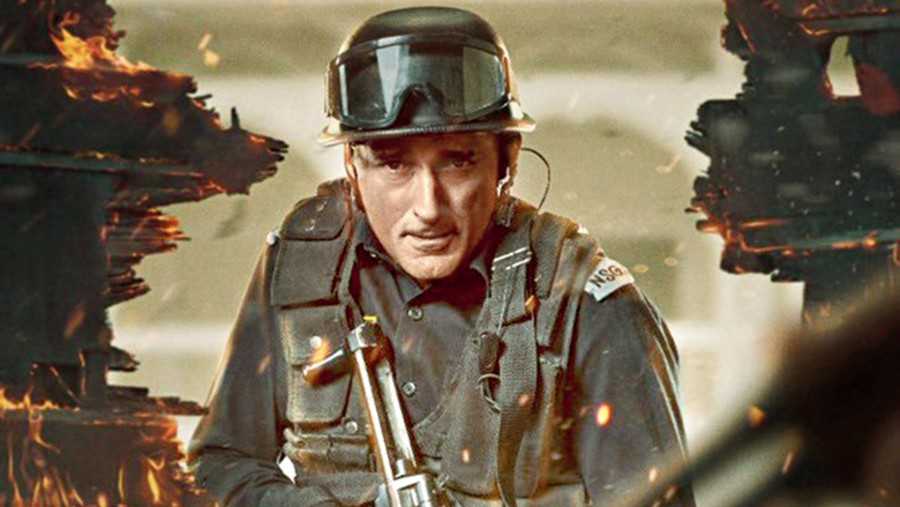“I don’t know Bengali,” blurts out Ken Ghosh the moment he hears the caller is from Calcutta. The director of films like Ishq Vishk and Chance Pe Dance obviously has had enough in Bengali coming his way unsolicited. “I am half Malayali. My mother is from Kerala. And Ken is not a short form of anything. In fact, my pet names are longer,” he carries on laughing, before one assures him that the opening question would be neither in Bengali nor on his nomenclature. Ghosh then settles down to speak about his upcoming film State of Siege: Temple Attack, streaming from this Friday on Zee5.
Given that the first instalment of State of Siege (26/11) last year was a web series, did you consider whether to make a film or a series since the web gives you an option of both?
That decision was already taken when I came into the project. The reason they did a web series last time is because 26/11 was a spread-out event over multiple locations with multiple terrorists over days. But the Akshardham temple attack, lasting over a day and half [on September 24-25, 2002 in which two armed men attacked the Swaminarayan Akshardham complex in Gandhinagar, Gujarat, killed 30 people and injured more than 80 before the National Security Guards (NSG) neutralised them], was a shorter story. It wouldn’t have held for a series. It makes better impact as a film.
The trailer starts in mountainous terrain. Where all did you shoot?
We shot in Manali, Jaipur, parts of Gujarat and Bombay.
Did you use footage from the actual location?
No. The story is very loosely based on the incident. There is little similarity with the Akshardham incident other than the temple attack. The way the terrorists come, their modus operandi are all different.

Does the film focus only on the incident?
The story follows Hanut Singh, one of the NSG commandoes, that Akshaye (Khanna) plays. Everything is around him, how his life gets entwined with this terrorist attack.
You have made romantic comedies, a dance film… where would you put action in your list of favoured genres?
I love making films. So there’s no favourite genre. This is not an all-out action film. This is a commando film. Commando action is very different. There is no car chase etc. We had a retired NSG lieutenant colonel, Sundeep Sen, on the sets every day. He guided us on their uniform, how they hold the weapon.
When did you shoot?
We finished just before the second wave hit. Thankfully nobody got sick. There were restrictions in place because of the Covid protocol. We had to reduce crowd in indoor sequences. Some sequences had to be toned down. I had shot Abhay Season 2 during the pandemic.
That must have been a pre-pandemic script?
Yes. That was a lot of work. Here at least I had the experience of one lockdown and could foresee problems that might crop up later. In Abhay 2, we were learning as we went along.
How are you planning the next year given the pandemic seems to be here to stay for now?
The associations are getting a lot of people vaccinated. I think there’s a rule that everyone on sets has to have got at least one dose. I have had both doses.
How was the experience of working with Akshaye Khanna?
It was my first project with him though we had met years ago. We got along very well. He was excited to get back in uniform. We bonded over food and the stories Lt Col (retired) Sen used to tell us.
Did it help that he had done two army films — Border and LOC Kargil — before?
Akshaye could very easily have said: “Look, I know what to do. I have done this before.” But when Lt Col Sen showed him, he became a student all over again and mirrored him. That’s the mark of a good actor. You don’t bring the baggage of your previous work to the next.
Also the terrain must have been different from that in an army film.
Yes, the army fights differently than the special forces. The army fights in mountains amid trees and against another army,
so there can be crossfire. The special forces fight in a city terrain where there are pillars and corridors and roof tops. Then there are hostages to think of.
That is why the NSG trains in buildings and streets. There are a lot of things that the army can’t do that the NSG does and a lot that the NSG can’t do that the army does.
You had spoken out about theatre owners needing to accept the reality of films releasing on OTTs.
The pandemic has taught us not to think too much. I would have loved it if State of Siege: Temple Attack could have released in theatres. One can only hope that our future becomes our past.
Finally, what was on your watch list during the lockdown?
The atmosphere was so depressing during the lockdown that all I could watch was comedy like Modern Family. I also got back to watching The Big Bang Theory and F.R.I.E.N.D.S all over again — light entertainment that keeps your spirits up.
Up, close, personal with Akshaye Khanna

Moment from Dil Chahta Hai
His dimpled smile adds a twinkle in his eyes. Akshaye Khanna, the reclusive actor who has essayed roles in a variety of films — romantic comedy to thriller to musical drama and even a negative role — returns to a genre that shot him into prominence in 1997 in Border, his second film. He talks to t2 about his Friday release State of Siege: Temple Attack on Zee 5 that has him donning fatigues again.
Was this film shot in the middle of the pandemic?
Yes. Very few people are able to start and finish a project during this horrible time. Something happens or someone gets Covid, shooting gets stalled. But we managed to shoot without any incident. You can put it all down to luck but we managed.
Is this a fictional take on the Akshardam temple attack?
It is based on the incident but it has been dramatised and to an extent, fictionalised. The basics are there and the details are fictionalised. We shot on both real locations and sets. A lot of it was in Rajasthan and Jaipur. I have never visited Akshardham. I would like to someday.
Tell us about your role.
My role is simple — an NSG commando who is fighting to neutralise a terrorist threat happening in a temple complex. The juice of the film is in the storyline, not the characterisation. The man is simply doing his job. There is no backstory or other distractions. It is from start to finish on this incident and how the NSG managed to bring things under control. It is over a period of a day-and-half, like the actual incident was.

Border
Did your experience of doing Border and LOC Kargil help while doing this?
I can say both yes and no. As that experience is almost two decades old, it’s been a long time. But subconsciously it must have helped that I had been around an army unit and interacted with them for a length of time when I was shooting those two films.
You had Lt. Col (retd) Sundeep Sen as advisor. What kind of inputs did you get from him?
He played an important part. His contribution can’t be quantified. The costume department to the director, everyone ran things by him, so he could correct and improve on them. He had also worked on the first series of State of Siege. So he understood the process of film-making.
You are returning to action after a long time.
I have been wanting to explore the action genre for a long time. But nothing in this space was coming to me. So when this came, I just grabbed it with both hands. As audience, I love such films — not just pure action but action combined with other things. With action alone, you can attract only a small section of the audience. But when you add emotion, thrill and unpredictability, this combination is attractive to me.
Any suggestions in this genre for our readers to watch?
I enjoyed a (Sky One) production called Strike Back. (The British- American television series follows the actions of Section 20, a branch of the British Secret Intelligence Service.)
Did you have to get in shape to look like a commando?
I try to stay in shape. But when you do an action film after a long gap, you discover body parts you never knew existed or muscles that you never thought you had. When they start aching and paining, you realise it is a different kind of commitment. Being an army man or a sportsman, you gain a fitness level that is difficult for a civilian to match. What is specific to a commando is his body language, not when he is having a cup of tea with his teammates, but when he is on the job. It was very important as it (film) is a visual medium. When you are a commando, there’s not much talking. They just do their job. A lot depends on body language rather than dialogue delivery. Lt. Col Sen helped me tremendously to get that right.
This will be your OTT debut. When this project came to you, did you stop to consider whether this would be the right vehicle as your first venture on this platform?
I have been saying this ever since OTT started becoming popular in our country that good content is good content. Where people watch it is irrelevant as long as it gets an audience.
It’s been 20 years since the release of Dil Chahta Hai. What are your thoughts?
One feels a sense of pride and gratitude to have been given an opportunity to be a part of something that was well loved and has withstood the test of time. It’s a film people continue to enjoy, no matter which generation one belongs to.










